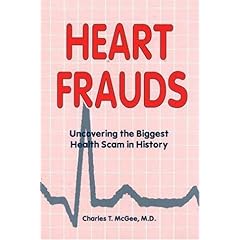
I first spotted this book on my Dad's coffee table. He was reading it. I asked him if it was good, and in his cryptic style he said, "It's taken me a long time to get through." Which I took to mean, 'yes.'
So, I picked it up from the library after he returned it. This is a hefty book, so it does take some time to get through it. It's worth reading all of it, because just reading part of it doesn't give you the whole picture.
Inside the Revolution is divided into three sections;
Revolutionaries, Reformers, and
Revivalists. The subtitle is "How the followers of Jihad, Jefferson & Jesus are Battling to Dominate the Middle East and Transform the World."
I found all the alliteration a bit over the top - but that is really a minor thing.
Joel C. Rosenberg, the author, based this book on hundreds of interviews (both on and off the record) and lots of research. He quotes Islamic leaders and Christian leaders, from the Qur'on and from the Bible. He profiles some of the major players in the Islamic world today - radicals, moderates and Christian leaders (although, for their protection, most of the later are given pseudonyms). All of this is supported by 23 pages of footnotes and five pages of recommended reading.
The first section, titled
The Radicals, covers terrorists and would-be terrorists. The motto here is "Islam Is the Answer; Jihad Is the Way." Reading this section is eye-opening, and a bit scary. It helped me realize that there are sincerely evil people in this world, who justify their destructive means by their desired end result. Rosenberg clearly spells out why Iran should never get a nuclear weapon, and outlines the theology of the radical leaders - quoting from the Qur'on on and different religious leaders' speeches. He also delves into the world of al Qaeda and Hezbollah, and discusses the ongoing economic jihad which al Qaeda and Iran have been pursuing against the United States, complete with quotes and statistics. Like I said, it's scary.
Fortunately, in the rest of the book, Rosenberg introduces us to the other forces in the middle east, battling these radical Islamic leaders. In section two, Rosenberg introduces the reader to
The Reformers who say, "Islam Is the Answer, Jihad is Not the Way." These Reformers are appalled by the Muslim-on-Muslim violence that the Radicals employ. They say Islam is a peaceful religion, and the Radicals are hijacking it for their own use. He outlines their theology, again including quotes from the Qur'on which support their interpretation.
He also introduces us to several of the leaders of this movement, including Hossein Khomeini (grandson of the Ayatollah Khomeini of Iran), Hamid Karzai (first democratically elected president of Afghanistan), Nouri Al-Maliki (prime minister of Iraq) and others. These leaders face death threats from the Radicals while trying to manage precarious positions - economically helping their people and at the same time working to stop terrorist activity in their own countries. Rosenberg is cautiously optimistic that these leaders can make a difference in the Middle East, and successfully fight the Radicals threatening to take over Islamic ideology.
In the third section, Rosenberg tells us about
The Revivalists - those who say, "Islam Is Not the Answer, and Jihad is Not the Way; Jesus Is the Way." He profiles several high-profile, and not-so-high-profile, Muslims who have chosen Christianity over Islam. The transformations are amazing - and so are the numbers. Rosenberg details the Christian revival going on right now in radical and moderate Islamic nations. He also goes through the theology of the Revivalists, as he did with the Radicals and the Reformers, and discusses a bit of the Revivalists' strategy as well.
Rosenberg ends with a call for action. "Judeo-Christian civilization today faces the most dangerous moment in the history of the Islamic Revolution." (pg 489) He continues with:
"[F]ar too many in both the West and the East - political, military, and intelligence leaders as well as everyday citizens - are asleep to the gathering storm. In my (Rosenberg's) judgment, this lack of awareness poses the greatest danger of all. An intellectually honest, spiritually strong, morally courageous, politically united global alliance against the Radicals could be enormously successful. ... But should we succumb to the ignorance, apathy, callousness, hubris, and fear already so pervasive among many of our leaders, we will find ourselves facing cataclysms of biblical proportions that will make the attacks of September 11, 2001, pale by comparison." (pg 489)
Critics will say that Rosenberg is still living in the past, in the world immediately following September 11th. However, the Radicals are patient, and persistent. Their objective is clear, and our response is critical.























